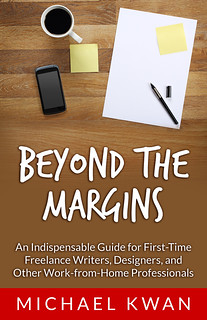One of my daughter’s favorite shows on Netflix is Dinosaur Train. The young dinos hop aboard a time-traveling locomotive to explore different areas and eras where different dinosaurs once lived. They’re making their own discoveries, out in nature. And that’s the exact same thing that Dr. Scott Sampson encourages in this week’s vlog. He may be a little biased.
If you are a regular viewer of Dinosaur Train, then you likely recognize Dr. Sampson as Dr. Scott the Paleontologist. Already a verifiable celebrity in his own right, he is also the current CEO and President of Science World. He’s originally from Vancouver and after spending the majority of his adult life in the United States, he’s come home to promote science among the masses.
You might remember when we went to Science World for the Vancouver Science Social last month. That was geared more toward bolstering scientific literacy and curiosity among adults. This week, we turn to the younglings, ensuring that their connection with the natural world around them never get extinguished.
Dr. Sampson authored a book a while back called How to Raise a Wild Child. It provides tools and advice for parents who want to encourage the natural “wild child” tendency among their kids. Let them pick up sticks and throw rocks. Did you know that the top toy in the National Toy Hall of Fame in the US is the stick. Just a regular old stick… because it’s also a cane, a magic wand, a lightsaber and more.
We all survived childhood to get here. It’s okay if kids get a little muddy along the way, because we’re all intrinsically connected with nature. We don’t need to venture off into the middle of the woods to reinforce that connection. Did you know that among the 80 trillion cells in the human body, about half aren’t even yours? They’re bacteria, fungal cells, and other microorganisms. You live together for mutual benefit.
The three guiding principles that Dr. Sampson put forth to support the wild child form the acronym NEW.
- Notice: Look up from your phone and notice the natural world around you, both big and small. Go outside and look around. Notice the weeds growing between the cracks in the sidewalk. Notice the clouds in the sky.
- Engage: Looking isn’t enough on its own. Encourage full body engagement with nature. Smell the flowers. Touch different textures. Listen to the birds.
- Wonder: We were once all filled with this sense of wonder, but it tends to fade as we get older. Don’t let that happen. Wonder leads to curiosity and critical thinking. Wonder keeps life interesting and engaging.
You can even extend that mnemonic device to NEWS by adding “Story.” Kids really solidify their memories and their connection with nature when you ask them to tell you about what they did and what they learned. Maximize the value from your walk through the trail or even playtime in the backyard. What did she see? What did she learn?
So, as Dr. Scott says on the TV show, “Remember, get outside, get into nature, and make your own discoveries!”







Trackbacks/Pingbacks